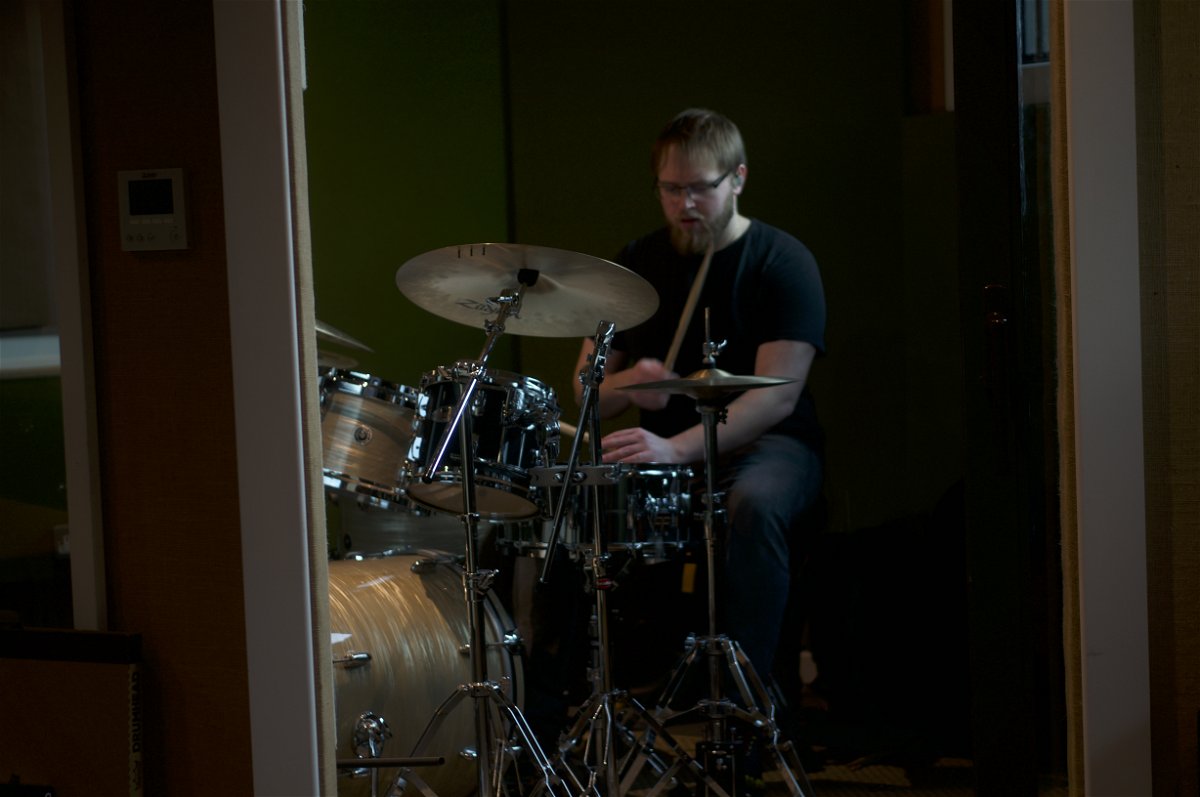
Achieving Creative Flow

Glenn Charles
Drummer | Composer | Educator

Creative freedom is an area that most musicians who play in improvised related idioms such as jazz, strive to understand. The creation and development of new ideas is an integral aspect of improvisation, but something that is very difficult to have control over. This stream of musical ideas is often referred to as, “flow”. Flow is what I am aiming to achieve.
Continuous, unbroken, pure, unfiltered musical ideas. Something spontaneous that I’ve never consciously played before. For a stream of subconsciousness to take over. The desire is for the flow of creative musical content to be uninterrupted requiring the musician to be continuously creating new ideas. It reasonable to determine that achieving this at the
required frequency is virtually impossible. This is why we commonly practice phrases, melodies, licks, riffs and patterns as a way to build our library of musical ideas, so that we have something of value and substance to offer up to the musical situation.
There are two useful ways of initially thinking about improvisation. It can be thought of as the creation of a new idea. Something raw and organic. Something that you have never
played before. Secondly it can be thought of as arranging the ideas/language, phrases and patterns that you already know in an unpracticed sequence on the fly. Even though the
second idea isn’t strictly improvisation in the true sense of the word, it is still a valid way of playing and is actually the most common approach to improvisation. Becoming able and
comfortable with pure, real improvisation takes time and patience. It requires self awareness and honesty. Finding the headspace where pure creativity happens is difficult.
It’s not black and white. It is elusive and inexact.
In any performance context we want to sound musical. We don’t want to sound as though we are regurgitating exercises. Thus, being creative while also sounding musical is the goal.
The music context you are in will always dictate as to what level of creativity is needed. Different levels or applications of creativity require varying states of mindset in order to
access them. This is something that you will have to determine for yourself, as all of us are different. However, there are some fundamentals that we can all benefit from by incorporating them into our daily practice and focused approach towards creativity. It is vital to be relaxed both mentally and physically when playing your instrument. Being mentally relaxed is not the same as not being mentally present and focused. You still need
to deploy a high level of concentration to the musical context. Being mentally tense; creating high stress for yourself will only act as a barrier to creative production.

The mindset required isn’t easy to describe, especially without being able to demonstrate something in person. It’s almost a case of “when you know, you know” or “you’ll know when it happens”. There can be a number of parallels drawn between this a meditation.
Again, you can set the scene for yourself. This will differ slightly depending on what instrument you play. You’ll also probably find it’s not possible to do this exact process that I describe due to the physical limitations of your instrument.
What I do is: Sit behind the drum kit, warm up the same as I do before any piece of playing. Then, without thinking, I just play. I haven’t pre-planned anything to play. I’m not thinking of phrases, patterns or melodies. I’m fundamentally hitting surfaces to see what happens. At this stage I just want to create sound. After 6 or 7 notes, a feel, melodic idea or pattern begins to emerge. I now allow this to inform me of the musical context I am working in. I continue playing without really, consciously thinking about what I’m hitting. I allow what I’m hearing to inform me of what to play next. This, again, happens without conscious
thought. You want your subconscious to take over and to be the musical director. It’s almost like saying “you don’t want to be in charge of you”. I’m not consciously saying to myself “I’m
going to play this pattern or phrase that I’ve spent hours shedding.” The goal here isn’t to try and execute a perfectly practiced phrase or even something that has been previously
thought out. The goal is to create melodic music on a pure, raw level from the subconscious.
Of course, patterns and motions that are already ingrained within my muscle memory are going to come out, but hopefully they will just be part of the ‘flow’ and connect with the raw,
new, natural phrases and melodies that come out of my subconscious. In doing this I am practicing both creativity and improvisation. Specifically, for myself, my intention is to
practice how to use creativity to improvise melodic music in a variety of contexts in order to develop musical language.
About PIVODIO™ Coach Glenn Charles
Glenn is a UK based musician/drummer and composer working in the world of jazz, west end and contemporary studio settings. Glenn was awarded a scholarship to study jazz performance at the Elder Conservatorium, Adelaide, Australia. Since completing his degree and returning to the UK he has continued study under the mentorship of Peter Erskine, setting up foundations as a freelance drummer, composer, and educator.
Glenn has toured, performed, and recorded with West End Musicals such as Bat out of Hell UK 2021/22 (dep) and Jersey Boys (dep). And artists and musicians such as; Andee-Louise Hypolite, Bogdan Kominowski, Beatrix Lovejoy Chappe, Michael Reed, Mike Dixon, John Aue, Julian Ferraretto, Luke Stevenson, IPlayBass, and many more.